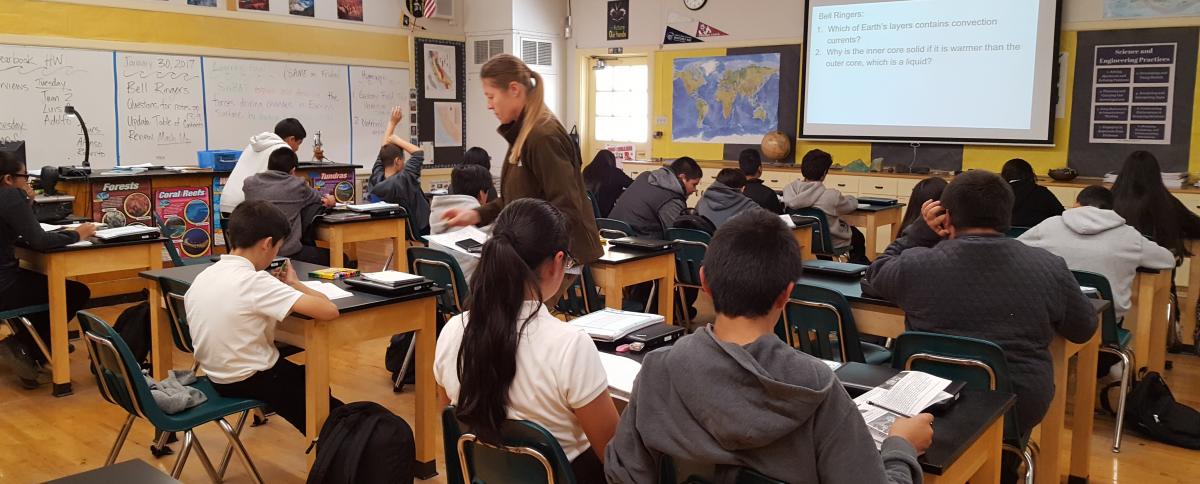Ms. Putney’s 7th Grade Science Classroom
Where a Healthy Respect for Science is Cultivated

“Good afternoon,” greets each student as Ms. Putney individually welcomes students class into her 7th grade science class at El Sausal Middle School in Salinas, California. Once students are seated, Robin stands before her classroom and is greeted with an equally respectful, “Good Afternoon, Ms. Putney”—and so begins another day of science education in Salinas.
Approximately 70% of the population in Salinas, California is Hispanic. But in Ms. Putney’s classroom, the student population is 100% Hispanic. “I wouldn’t trade this experience for the world,” says Robin referring to her 10 years of teaching science at El Sausal MS. “I deliberately chose this school because it has the greatest need for science literacy. There is a tremendous housing shortage in Salinas and some of our students live in multiple family homes where they receive little sleep, food or time with their hard-working parents. No one is reading to them. They need us more than anyone,” says Robin who loves working with colleagues who teach 560 students.
Discovering Places Only Imagined
One would never know Ms. Putney’s students often don’t get help with school work when they enthusiastically raise their hands to be called on when asked what the four layers of earth are. “It’s not nearly as much fun teaching affluent 7th grade students. They’ve already been to all the places my students have only imagined. They don’t get as excited.” (We believe the excitement in Robin’s’ students has a great deal more to do with her teaching style than she credits herself).
While many of Robin’s students live less than 20 miles from the Monterey Bay, several have never been to the ocean. When Robin’s students cannot get to the ocean, she brings it to them with Shape of Life media resources. “Shape of Life is an excellent way to bring the environment to my students.”
Bringing the Ocean to the Classroom
As a trained outdoor educator, Robin loves teaching about ecosystems. For example, she uses Shape of Life to show how animals transfer energy in ocean ecosystems. “I love to project the short classroom videos. They are so well produced they instantly capture imagination and excite students to dive into content.” The ‘diving’ process begins when Robin embeds Shape of Life short videos into EDpuzzle as she teaches Shape of Life lesson plans. In this way, Robin keeps students on task while tracking their comprehension. Each of Robin’s students uses a classroom assigned chrome book where a google accounts provides learning pace flexibility and tracks progress.
Robin says that her greatest challenge is to open a student’s mind and reduce the filters that block learning new things.
Shape of Life is dedicated to breaking those barriers that prevent students from embracing science.
















